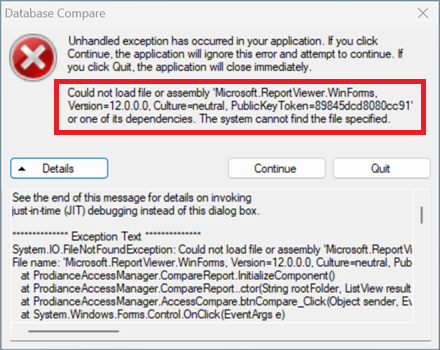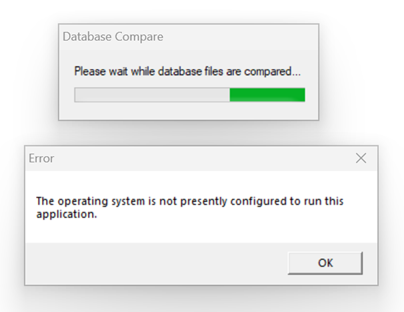It’s been nine years since my series on deploying Office 2016, and a lot has changed since then.
- Microsoft changed the installer technology from from Windows Installer (MSI) to Click-to-run, which is unique to this product suite. There was a period of overlap when both installer technologies were available, but all products in the Office suite, including the long-term servicing channel (LTSC) releases, have used Click-to-run since 2019.
- Microsoft changed the release cycle from every few years to several different delivery schedules ranging from weeks to years.
- Microsoft updated the system requirements and prerequisites.
- Microsoft changed the name of the product from “Microsoft Office” to a variety of names depending on which features the customer purchases, ranging from “Office 365” up to “Microsoft 365 Apps for enterprise”; we’ll focus on the latter here.
- I stopped caring about Microsoft Configuration Manager and focused all my endpoint management energy on Microsoft Intune.
I thought it was time to dive back in and document the state of the art in M365Apps deployment in 2025! This is the first post in a series.
Application Packaging Guidelines
Goal: Build a reliable Microsoft 365 Apps for enterprise app in Microsoft Intune for deployment on Windows 11.
As before, here are some of the rules I will follow:
- Installation must be silent.
- The application package must account for all possible dependencies.
- The installation must be reversible.
- First-run prompts must be minimized or preferably eliminated.
Test Installation
Let’s jump right in by gathering the needed tools and performing a test installation in a virtual machine. This will let us verify that we know all the prerequisites.
I’m not going to spend much time discussing Microsoft’s Click-to-run technology because that is well-documented elsewhere.
Configuration File
First, browse to the Office Customization Tool to generate a configuration file. My goal is to install all available features as a test.
- Architecture: 64-bit
- Products: Microsoft 365 Apps for enterprise, Visio Plan 2, Project Online Desktop Client
- Additional products: [None—I want to see if anything needs these components before including them.]
- Languages: English (United States)
- Automatically accept the license terms: On
- Everything else set to defaults.
Here is my file, “BlogPostConfiguration.xml”:
<Configuration ID="GENERATE-YOUR-OWN-GUID">
<Info Description="This is a test to verify that prerequisites are covered." />
<Add OfficeClientEdition="64" Channel="Current">
<Product ID="O365ProPlusRetail">
<Language ID="en-us" />
<ExcludeApp ID="Groove" />
<ExcludeApp ID="Lync" />
</Product>
<Product ID="VisioProRetail">
<Language ID="en-us" />
<ExcludeApp ID="Groove" />
<ExcludeApp ID="Lync" />
</Product>
<Product ID="ProjectProRetail">
<Language ID="en-us" />
<ExcludeApp ID="Groove" />
<ExcludeApp ID="Lync" />
</Product>
</Add>
<Updates Enabled="TRUE" />
<RemoveMSI />
<AppSettings>
<Setup Name="Company" Value="Deployment Mad Scientist" />
</AppSettings>
<Display Level="Full" AcceptEULA="TRUE" />
</Configuration>Office Deployment Tool
Browse to https://aka.ms/odt and follow the links to download the Office Deployment Tool. On the downloaded file’s context menu (right-click), click Properties, select Unblock, and click OK to remove the Mark of the Web.
Run the downloaded program to extract the contents. I will extract the contents under my Downloads folder in a new folder named “odt-extracted”. Copy the configuration file we created above into that folder.
Open an administrative Command Prompt and change directories to the “odt-extracted” folder (or whatever you named it). You can run setup.exe /? to see what options are available.
We just want to install immediately, so we’ll use the /configure switch.
setup.exe /configure BlogPostConfiguration.xmlWait for the setup program to finish, and then restart the computer.
A quick check of Control Panel > Programs and Features (appwiz.cpl) shows that these apps were installed:
- Microsoft 365 Apps for enterprise – en-us
- Microsoft Project – en-us
- Microsoft Visio – en-us
Run all the M365Apps that were added to the Start menu. Be sure to run each program listed under “Microsoft Office Tools”, as those have had undocumented prerequisites in previous versions.
- I ran WINWORD.EXE first and signed in with an account licensed for all the products I installed.
- I ran all the other M365Apps at the top level of the Start menu without issue.
- I created two workbook files with Microsoft Excel and then ran the Spreadsheet Compare tool. The tool ran, allowed me to select the two files, and successfully compared them without errors.
- I created two database files with Microsoft Access and then ran the Database Compare tool. The tool ran and allowed me to select the database to compare and specify options for the comparison, but when I clicked “Compare”, an unhandled exception dialog window was displayed. We just found an undocumented dependency on Microsoft Report Viewer 12.

- Some web searching reveals that the missing prerequisite application is Microsoft Report Viewer 2015 Runtime.
- Report Viewer 2015 has its own prerequisite of the Microsoft System CLR Types for SQL Server 2014. How far down does this rabbit hole go?

- After installing both prerequisites, Database Compare runs but then displays this error message when attempting to compare databases: “The operating system is not presently configured to run this application.”

We’ll have to revisit this issue later, if at all.
System Requirements
Let’s take a look at the system requirements.
| Component | Comments |
| Processor | Microsoft Teams replaces Skype for Business, so we will assume a minimum 2 GHz processor. |
| Operating system | We will set Windows 11 as the minimum requirement. Windows 10 goes out of support soon as I am writing this, and Intune can’t manage servers. |
| Memory | 4 GB |
| Disk | 4 GB |
| Display | Don’t worry about these. We’ll assume that any PC running Windows 11 will satisfy these requirements. |
| Graphics | |
| Browser | |
| .NET version | Windows 11 includes .NET Framework 4.8.1, so we should be all set here. The documentation mentions .NET Framework 3.5, but none of the apps prompted to install it when I ran all of them above. |
| Other | Just as with Office 2016, M365Apps includes a component with other prerequisites: Report Viewer 2015 Redistributable and Microsoft System CLR Types for SQL Server 2014. |
Coming Up
There should be fewer steps here than last time, but I want to take time to explore some options. Here is my plan for this series.
- Deploying Microsoft 365 Apps for enterprise: Overview and Requirements
- Customizing Setup
- Building the Application in Intune
- Building the prerequisite apps.